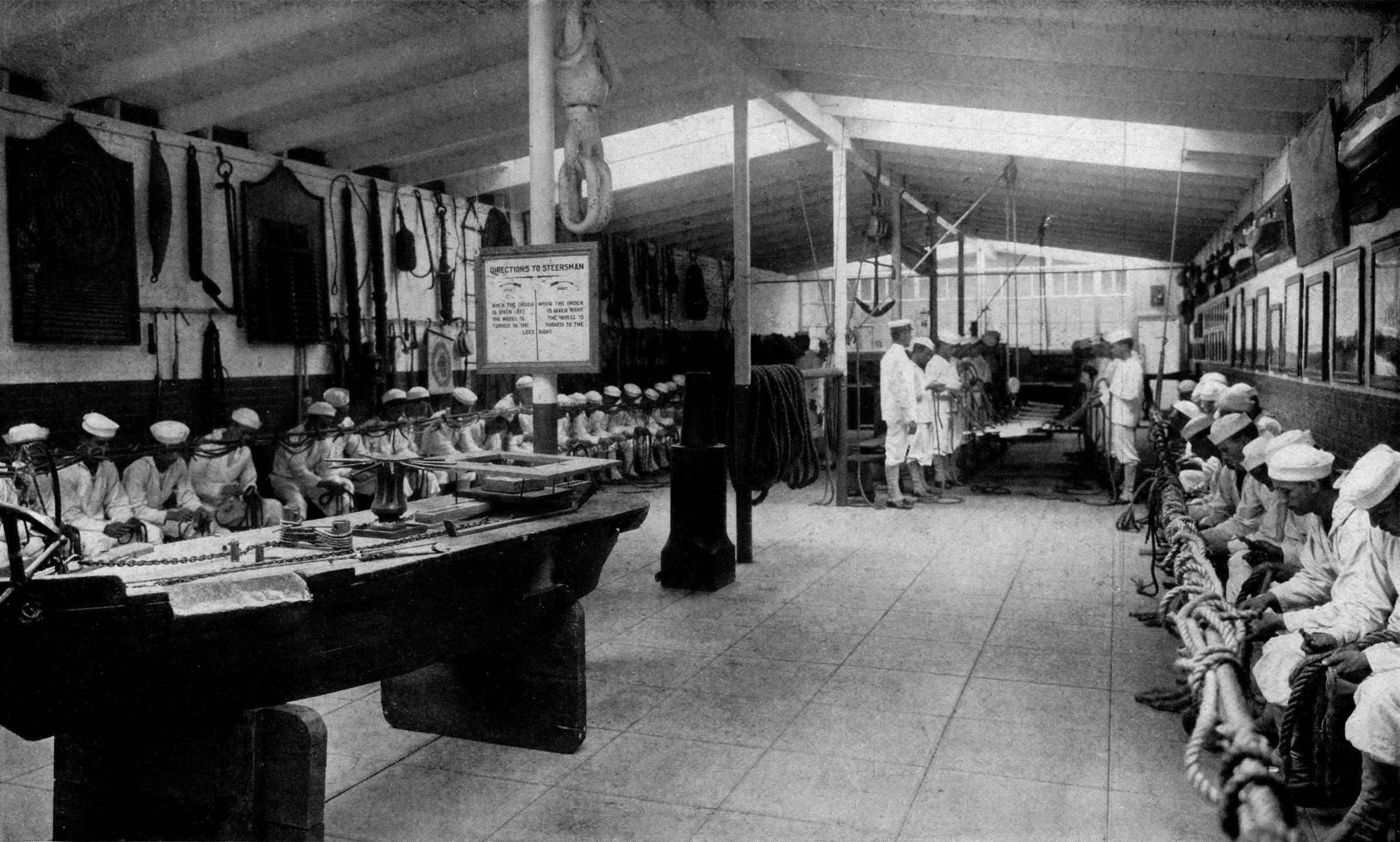Marlinespike Seamanship on:
[Wikipedia]
[Google]
[Amazon]
 Ropework or marlinespike seamanship are umbrella terms for a skillset spanning the use, maintenance, and repair of
Ropework or marlinespike seamanship are umbrella terms for a skillset spanning the use, maintenance, and repair of
 Ropework or marlinespike seamanship are umbrella terms for a skillset spanning the use, maintenance, and repair of
Ropework or marlinespike seamanship are umbrella terms for a skillset spanning the use, maintenance, and repair of rope
A rope is a group of yarns, Plying, plies, fibres, or strands that are plying, twisted or braided together into a larger and stronger form. Ropes have high tensile strength and can be used for dragging and lifting. Rope is thicker and stronger ...
. Ropework is used by seafarers, climbers and military personnel.
Included are tying knot
A knot is an intentional complication in Rope, cordage which may be practical or decorative, or both. Practical knots are classified by function, including List of hitch knots, hitches, List of bend knots, bends, List of loop knots, loop knots, ...
s, splicing, making lashings, whippings, and proper use and storage of rope.
While the skill of a sailor
A sailor, seaman, mariner, or seafarer is a person who works aboard a watercraft as part of its crew, and may work in any one of a number of different fields that are related to the operation and maintenance of a ship. While the term ''sailor'' ...
in the Age of Sail
The Age of Sail is a period in European history that lasted at the latest from the mid-16th (or mid-15th) to the mid-19th centuries, in which the dominance of sailing ships in global trade and warfare culminated, particularly marked by the int ...
was often judged by how well he knew marlinespike
A marlinspike (, sometimes spelled marlin spike, marlinespike, or rchaicmarlingspike) is a tool used in marine ropework. Shaped in the form of a narrow metal cone tapered to a rounded or flattened point, it is used in tasks such as unlaying r ...
seamanship, the knowledge it embraces involving docking a craft, towing, making repairs underway, and more is still critical for modern seafarers.
Whippings
A whipping knot is a means of holding the cut end of a rope together to prevent fraying and ensure ease of use. The simplest form is thecommon whipping
The common whipping is the simplest type of whipping knot, a series of knots intended to stop a rope from unravelling. As it can slip off the rope easily, the common whipping should not be used for rope ends that will be handled. This whipping ...
. Constrictor knot
The constrictor knot is one of the most effective Binding (knot), binding knots.Clifford W. Ashley, ''The Ashley Book of Knots'' (New York: Doubleday, 1944), 224-225.Brion Toss, ''The Complete Rigger's Apprentice'' (Camden, Maine: International M ...
s can serve as temporary whippings while cutting ropes, as can a few layers of adhesive tape
Adhesive tape is one of many varieties of backing materials coated with an adhesive. Several types of adhesives can be used.
Types
Pressure-sensitive tape
Pressure-sensitive tape, PSA tape, self-stick tape or sticky tape consists of a pre ...
.
Other fray-prevention techniques include back-splicing, aglets, or the application of a rubberized adhesive coating, resin, or paint to the cut end. Some modern synthetic fiber
Synthetic fibers or synthetic fibres (in British English; see spelling differences) are fibers made by humans through chemical synthesis, as opposed to natural fibers that are directly derived from living organisms, such as plants like cott ...
s, such as nylon
Nylon is a family of synthetic polymers characterised by amide linkages, typically connecting aliphatic or Polyamide#Classification, semi-aromatic groups.
Nylons are generally brownish in color and can possess a soft texture, with some varieti ...
and polyester
Polyester is a category of polymers that contain one or two ester linkages in every repeat unit of their main chain. As a specific material, it most commonly refers to a type called polyethylene terephthalate (PET). Polyesters include some natura ...
can make use of alternative methods such as fusion, which uses heat to melt the fibers to make a clean cut and permanent end; this technique cannot be used with non-melting fibers such as aramid
Aramid fibers, short for aromatic polyamide, are a class of heat-resistant and strong synthetic fibers. They are used in aerospace and military applications, for ballistic-rated bulletproof vest, body armor cloth, fabric and ballistic composites ...
s.
However, the rope and knotting expert Geoffrey Budworth warns against the practice of fusing thus:
Sealing rope ends this way is lazy and dangerous. A tugboat operator once sliced the palm of his hand open down to the sinews after the hardened (and obviously ''sharp'') end of a rope that had been heat-sealed pulled through his grasp. There is no substitute for a properly made whipping.
See also
* * * *References
{{Seamanship Maritime culture